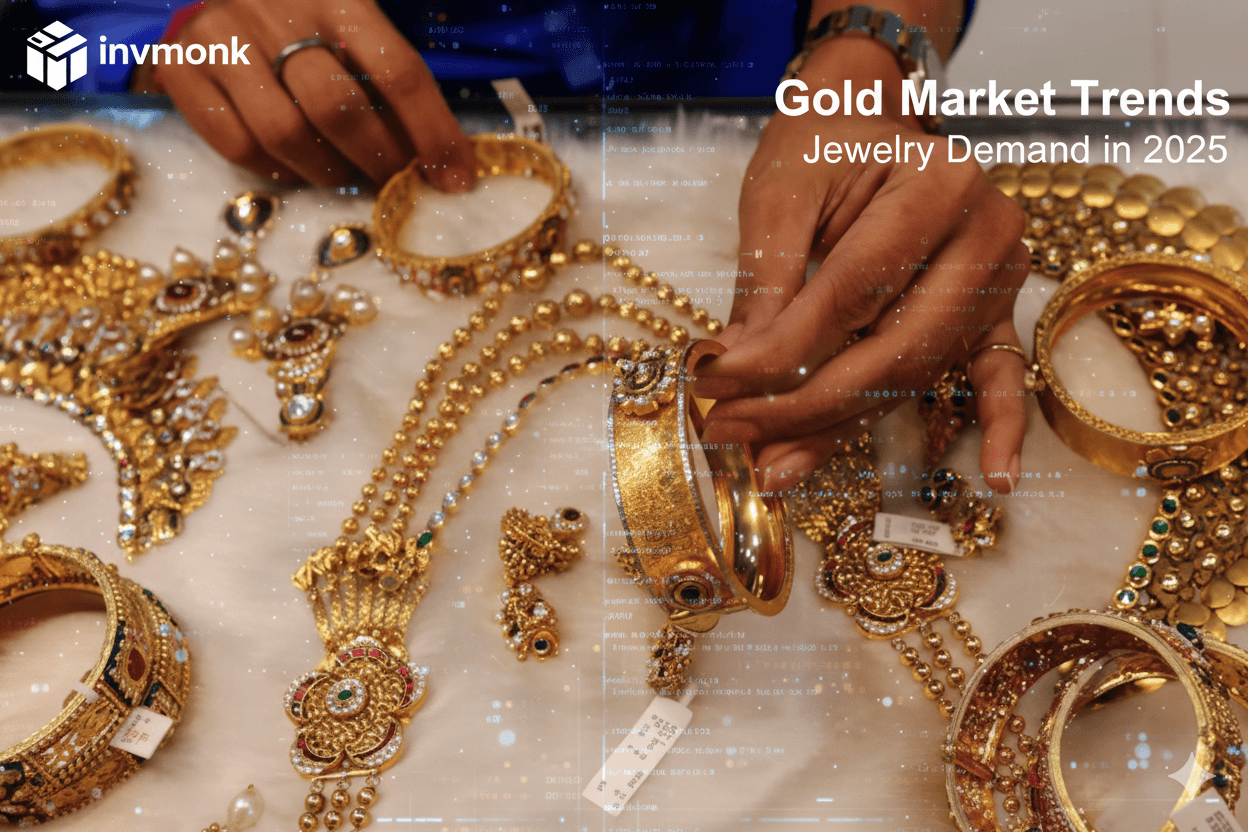The Golden Rally of 2025
Gold has always occupied a sacred space in Indian homes — as an ornament, a symbol of prosperity, and a hedge against uncertainty. But in 2025, the yellow metal is doing more than just glittering in lockers. It’s quietly making millions of Indian households richer.
With international gold prices crossing $2,700 per ounce and domestic prices soaring beyond ₹72,000 per 10 grams, the cumulative value of gold owned by Indian families — estimated at 34,600 tonnes — now stands at a staggering $3.8 trillion. That’s roughly 89% of India’s GDP.
For context, this means Indian households, collectively, hold more wealth in gold than the combined GDP of countries like France and the UK.
The Emotional Metal with Economic Muscle
Gold is often seen through a sentimental lens — weddings, festivals, and family heirlooms. But beneath the emotional value lies a solid economic truth: gold acts as a store of value and a buffer against inflation.
As global inflation remains sticky and geopolitical risks continue in Europe and the Middle East, investors are rushing to safe-haven assets. The Indian rupee’s mild depreciation further amplifies domestic gold prices, turning existing gold owners into beneficiaries of this global churn.
This phenomenon has led to what economists call a “wealth effect” — a psychological and financial boost that encourages spending and investment because people feel richer when their assets appreciate.
The Sachin Tendulkar Moment: A Lesson in Macro-Economics
Recently, cricket legend Sachin Tendulkar appeared in a campaign for Tanishq, urging Indians to exchange their old gold for new jewellery. But beyond the advertisement, Tendulkar delivered a surprisingly sharp economics lesson.
He explained that since India imports most of its gold, recycling existing gold within the country could reduce import dependency, strengthen the rupee, and improve the trade balance.
In one line, he simplified a key macroeconomic challenge:
“If you exchange your old gold, we won’t need to import new gold — and our country will become stronger.”
For millions of viewers, this wasn’t just marketing — it was economics 101, delivered by one of India’s most trusted icons.
Gold and the Indian Economy: A Complicated Relationship
India’s obsession with gold often comes with a trade-off. The country imports nearly 800-900 tonnes of gold annually, putting pressure on the current account deficit. But the flipside is that this gold also forms a massive reserve of private wealth, shielding households from currency volatility and stock market swings.
During periods of economic slowdown or job uncertainty, gold serves as a financial cushion — easily liquidated, universally accepted, and inflation-proof. In rural India, where formal banking still has limitations, gold functions almost like a parallel savings instrument.
Moreover, with the rise of digital gold, Sovereign Gold Bonds (SGBs), and Gold Exchange Traded Funds (ETFs), Indians are finding new-age ways to invest in this timeless asset without physically holding it.
From Lockers to Balance Sheets: The Hidden Wealth of India
What sets 2025 apart is how rising gold prices have begun to reshape India’s household wealth map. Even without selling a single gram, the value appreciation alone adds trillions of rupees to family balance sheets across the country.
For the middle class, this acts as a silent financial buffer — one that can fund children’s education, down payments for homes, or even retirement. For rural families, it’s often the difference between economic vulnerability and resilience.
The Road Ahead: Can Gold Power India’s Growth Story?
While the rally in gold prices is good news for households, it poses a policy puzzle for New Delhi. Every surge in price encourages more imports, which can strain the trade deficit. That’s why campaigns like the one fronted by Tendulkar — promoting recycling and exchange — carry both economic and patriotic undertones.
As the government explores ways to monetise idle gold through deposits and bonds, a cultural shift toward responsible gold ownership could transform how India uses its $3.8 trillion treasure.
In short, every necklace, coin, and bangle sitting in an Indian locker is not just jewellery — it’s an unacknowledged contributor to national wealth.
When Gold Teaches Economics
Gold’s story in India has come full circle — from temples to trading floors, and now into classrooms of public understanding. And in a rare twist, it took a cricket legend to remind us that economics isn’t always about charts and equations; sometimes, it’s about something shining in your mother’s jewellery box.
Rising gold prices may worry policymakers, but for the average Indian household, they’re a reason to smile — because the nation’s collective wealth, quite literally, just got a little brighter.

